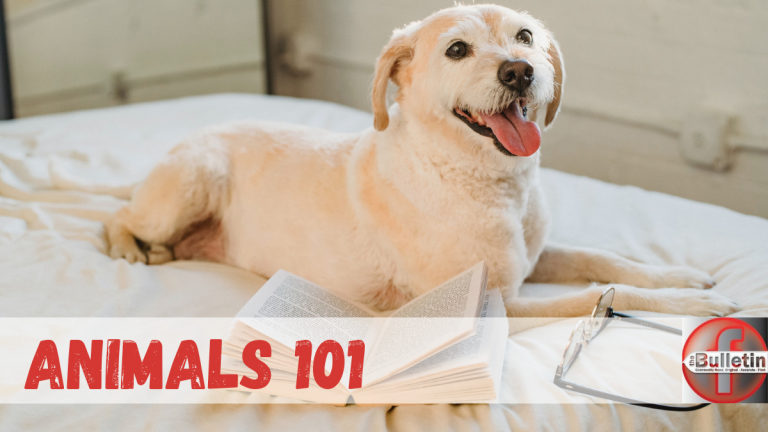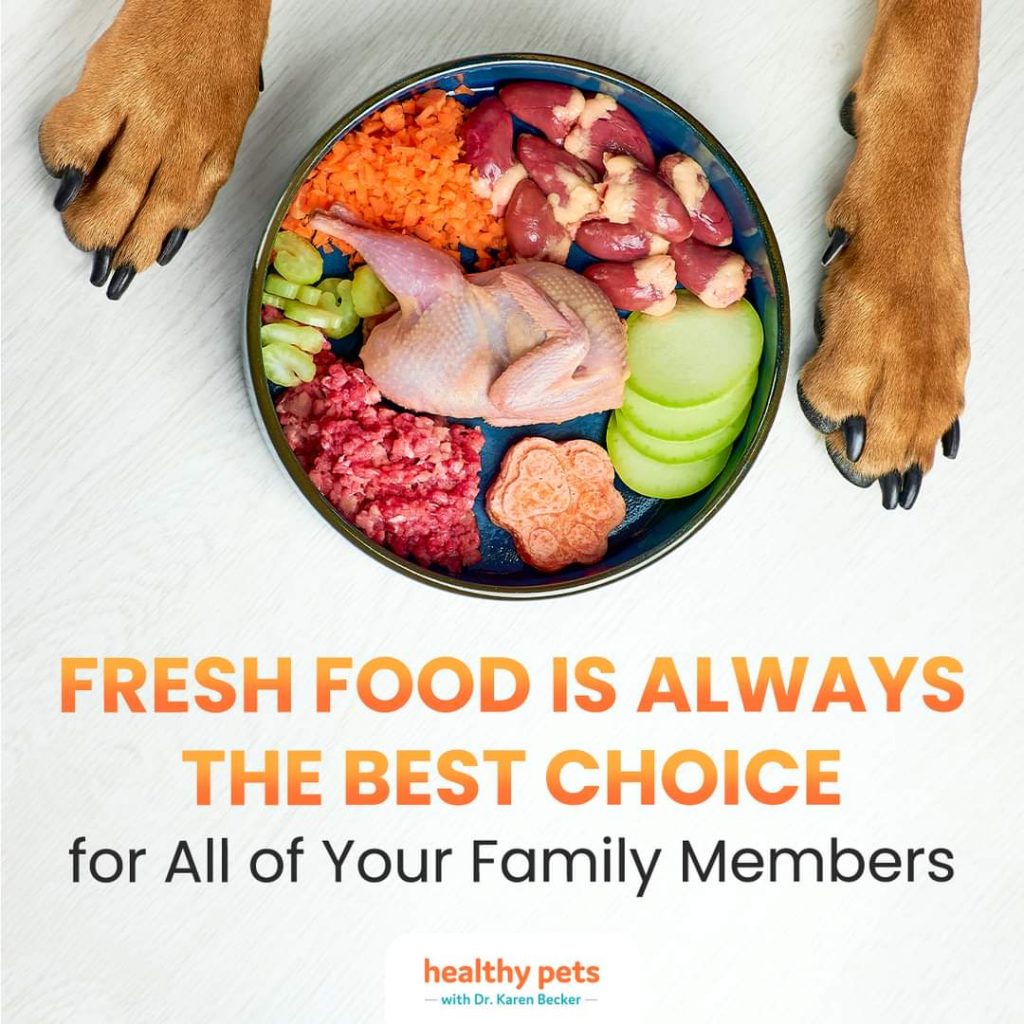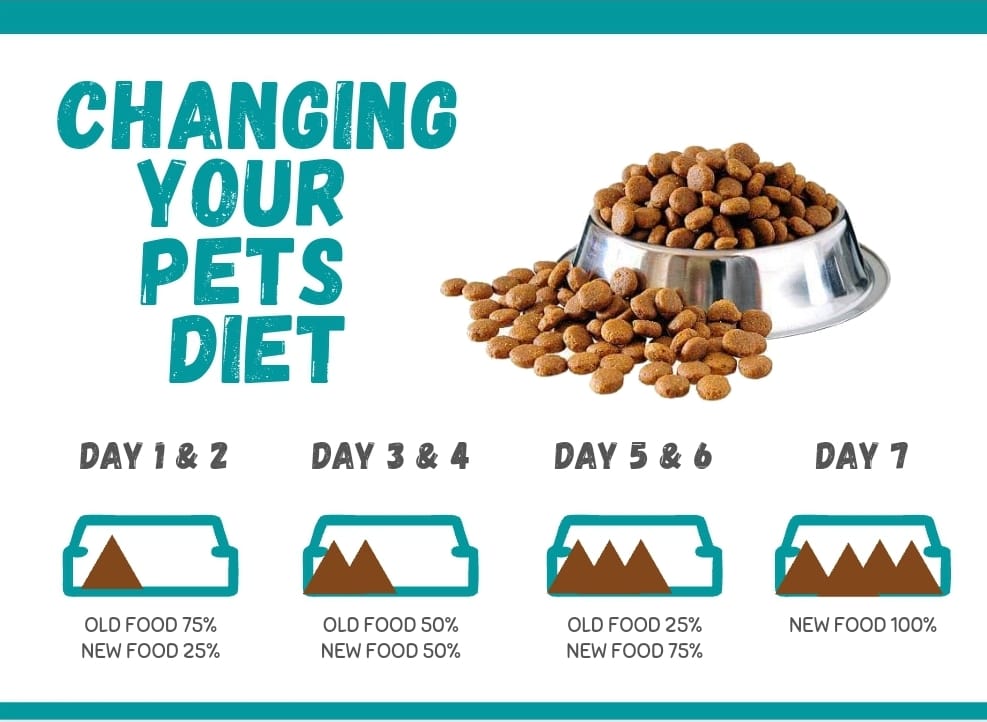
FEEDING YOUR ANIMALS THE BEST POSSIBLE DIET IS IMPORTANT FOR THEIR HEALTH.
Nutrition, for me, is a very interesting topic from my profession’s side as well as the animal welfare side and it is something many pet parents are unsure about! I am not a veterinarian or animal food specialist, so all this information comes from a trusted vet, who is also the co-author of The Forever Dog. I have tried many of these for my animals and just like humans, animals, even from the same species, certainly have food preferences. Our one dog, loves pineapple and blueberries, while the other two like bananas and strawberries.
It is important to remember that every type of food you feed your animals has the potential to do 1 of 2 things: HEAL or HARM. What are the food and treats you give them, doing to your animal’s body? Do they help reduce inflammation or cause it? Provide antioxidants or just empty calories? Provide polyphenols or just synthetic flavours and dyes?
“I only feed my dog their kibble and nothing else!” was once a proud pet owner statement, but microbiome research proves this is a big mistake. Study after study shows the more diverse your pet’s bowl is, the healthier their gut and immune system can become.

If you’re looking for “natural” diets for your animals, you won’t find them in the bags and cans of ultra-processed pet food. Big pet food companies often use popular buzzwords to describe their products, but it’s not reflective of what’s actually in their products.
Remember that just because a vet or a pet shop sells a certain product, it does not mean that it is ideal, healthy, or safe for your animals. Following the money can reveal a lot, so it is your responsibility to make sure the food you give is right for your animals.
By replacing poor quality, highly processed dog treats with no nutritional value with fresh foods from your fridge, you’re treating your animals with whole-food sources of vitamins, minerals, and bioactive molecules that feed health, not health problems. To make sure you’re feeding truly healthy foods, ingredient sourcing is key, which means you’ll have to do a little research about the pet food company you’re supporting.
Traits of a good diet for your animals:
- Minimally processed
- Low carb
- Species appropriate
- Fresh
- You can try an eating window for your dog (8h eating time & 16h fasting)
Some questions are:
- Can my dog eat MEAT, FRUITS & VEGGIES, DAIRY & EGGS?
- What other SUPPLEMENTS might be healthy?
- Any other helpful FOOD TIPS?
- What foods are DANGEROUS?
- How can the kind of BOWLS my pet eats from, be helpful?
You can also check out this link by Dr. Karen to search for particular foods that are safe for pets.
VERY IMPORTANT! – Please note that the whole food item might not be ideal for the pet or even dangerous. Removing for example the seeds or skin of the food might be necessary. If your pet has any medical conditions, it is important to discuss what they eat with your vet who knows your individual pet best because certain foods, too many carbs, too much protein, etc., may have a dangerous effect on certain health conditions.
THE NO CARB REQUIREMENT
Dogs and cats don’t have a carb requirement, so why do grain-free pet foods often contain so many carbs? The reason is it’s cheaper to produce foods with less meat protein. The issue starts with many pet food companies using excessive vegan fillers (including peas, lentils, rice, corn, potatoes, quinoa, oatmeal, tapioca, wheat, etc.) to offset the large amount of critically important (and more expensive) meat that dogs and cats require for health.
The end result of excessive plant-based fillers in pet foods can be a chronic amino acid deficiency from not enough meat-based protein in pet foods, which can lead to heart and other organ dysfunction as well as many other issues.
There are too many plant-based ingredients and not enough real meat in many pet foods on the market. Keeping carbs low in any type of pet food is important (“grain-free” or not).
HOW TO CALCULATE
- CARBS
To ensure your pet is receiving an adequate amount of protein, you have to calculate the amount of unnecessary starch (carbs) in the diet. Aim to feed dry foods with less than 15-20% carbs.
Here’s how to calculate the carbs in your dry pet food – find the numbers under the Guaranteed Analysis on the side of your pet food bag, and put them into this equation:
100% – % protein – % fat – % moisture – % ash (if not listed, use 6%) = % carbs
- DAILY CALORIES
Dog Daily calories = Body weight (kg) x 30 + 70
Cat Daily calories (feline) = Body Weight (kg) x 30 + 70 x 0.8
Use their ideal weight not their current weight in formulas!
- WATER INTAKE
The amount of drinking water your dog needs daily depends on their size, diet, age, activity level, and weather conditions. A good general guideline is that a healthy dog should drink between 30-60ml per kg (½ – 1 ounce of water per pound) of body weight each day.
Provide fresh, good-quality drinking water for your animals. This means water that doesn’t contain fluoride, heavy metals, or other contaminants. Filtered water is ideal, not only for two-legged family members but for furry family members as well.
Also, read about training tips for your pet.
- CHANGING YOUR PET’S DIET
Changing your pet’s food too fast can cause digestive issues. Follow this general guideline over 7 days.

MORE ON THE SCIENCE
- A recent study from Finnish veterinary scientists shows that healthy leftovers of human food offered to puppies significantly reduce allergy symptoms and skin problems later in life. This long-term, protective effect increased the more often real foods were added, so the more exposure puppies had to a variety of healthy leftovers, the more protection there was from developing skin issues down the road.
“…even if the dog eats 80% of its food as dry, adding a minimum of 20% of the food as raw significantly decreased the risk of AASS [allergic skin disease] later in life.” – Dr. Anna Hielm-Björkman
- According to scientists, feeding a variety of raw or minimally processed, real food early in life may lead to microbial exposure that enhances the immune system early on, reducing allergic responses later in life. Some of the owners of the food fed in this study were fish and meats, vegetables and roots, culinary mushrooms, buttermilk, and other fermented milk products and berries.
- It is important to look at the studies when someone claims Yay or Nay for a food item. For example, a study that said garlic is toxic for dogs was based on too much garlic/day for any dog. This also includes myths about other foods like avocados and nuts. Context is important!
Are you looking for more DIY fresh food ideas to inspire healthy canine snacking?! Dr. Karen coaches you through how to successfully swap unhealthy foods and treats for healthier choices. She does support more natural foods and raw diets instead of kibble. In the book, The Forever Dog, the authors list over 40 of their favourite fresh foods from the fridge to add to your dog’s bowl, backed by the most surprising new science as to why they’re so amazing at building health and longevity! They also show you how to add them and how much to offer in a way that keeps your pup’s nutrition in balance.
The health of your pet should be important to you and providing them with a healthy and species-appropriate diet is crucial. It is also your responsibility to make sure that the particular food is safe for your individual pet.
Next week we will learn more about Feral cats.
WHEN YOU KNOW BETTER, DO BETTER!